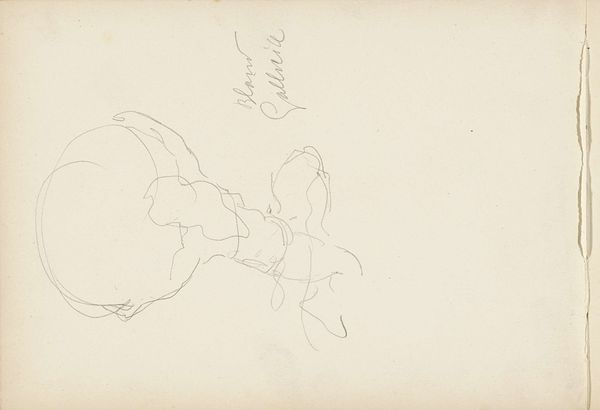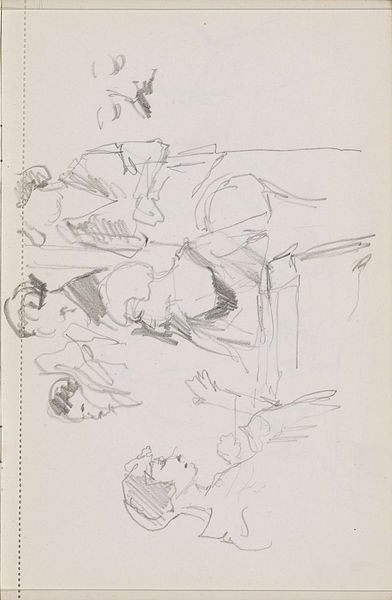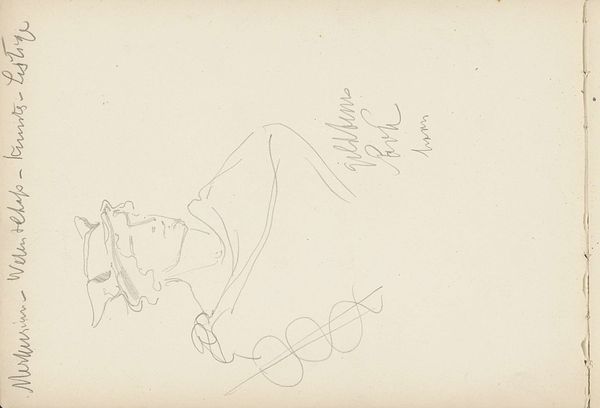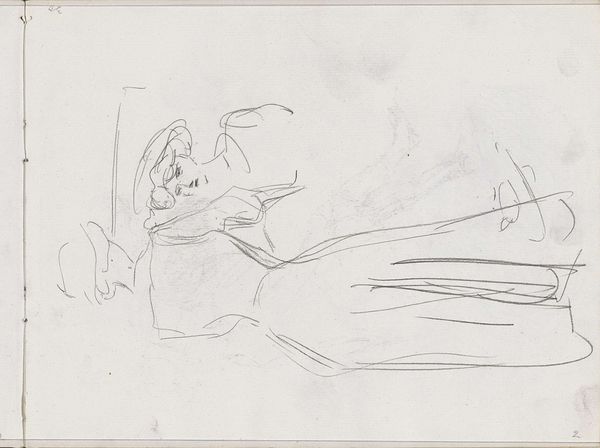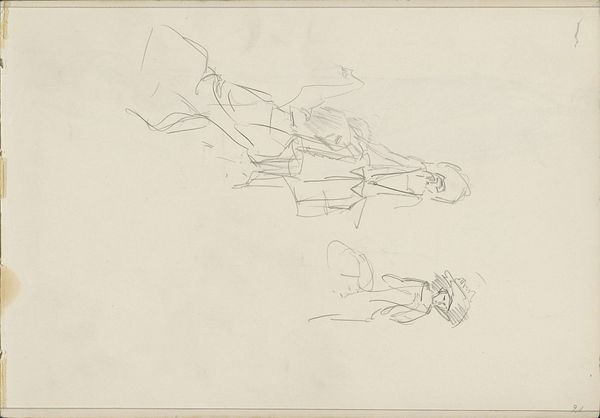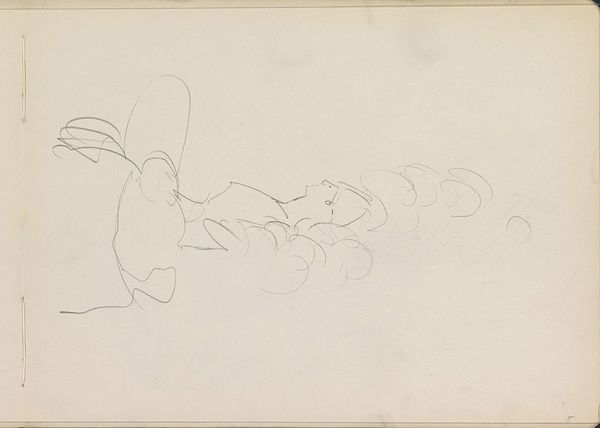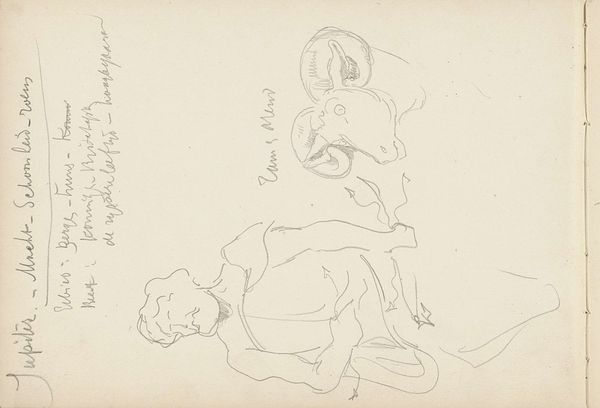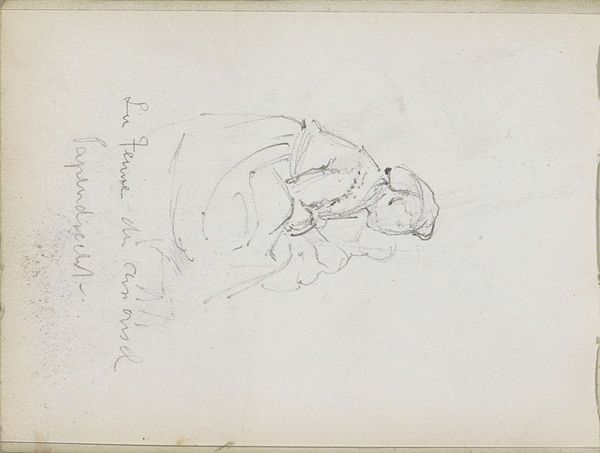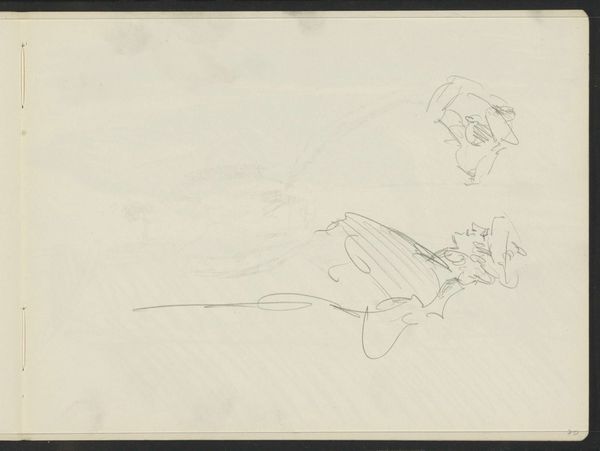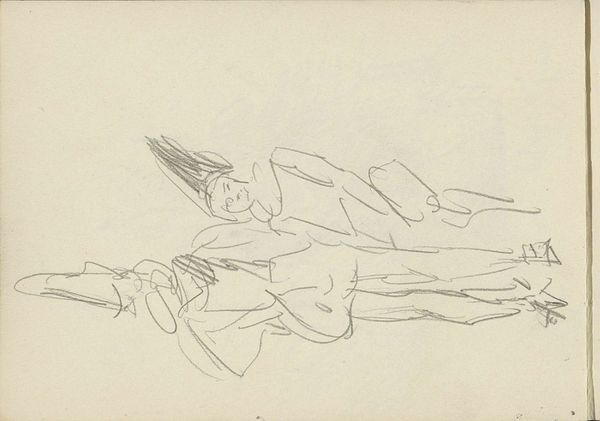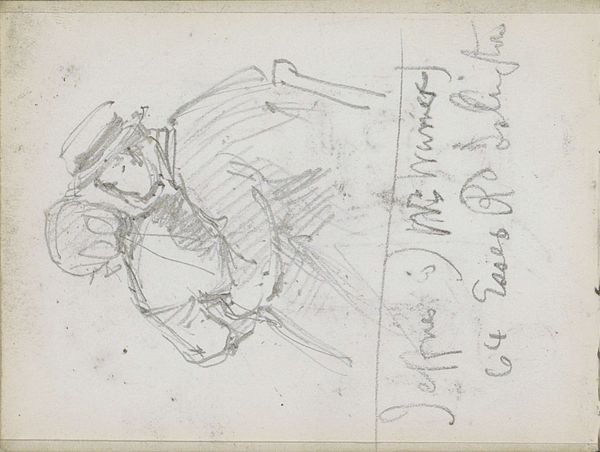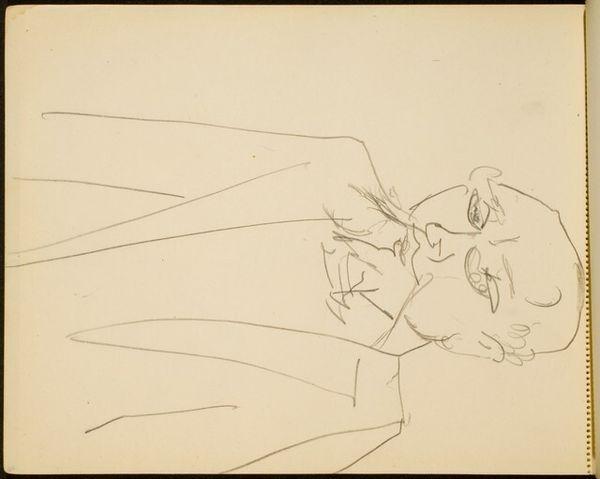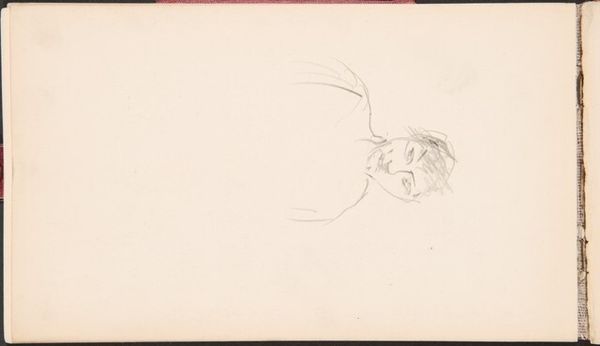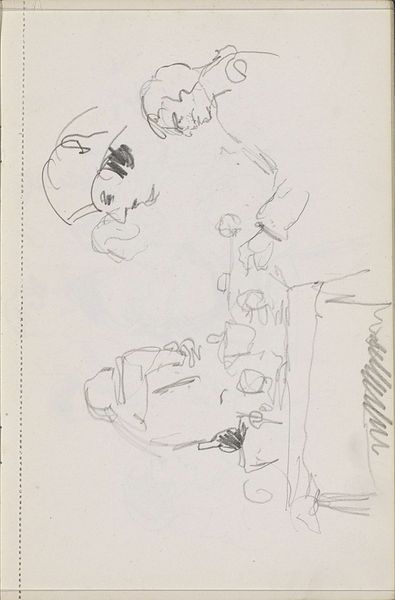
Riviergoden Amstel en IJ naar sculpturen op de gevel van het stadhuis van Amsterdam 1900 - 1903
0:00
0:00
drawing, paper, sculpture, pencil
#
drawing
#
paper
#
11_renaissance
#
sculpture
#
pencil
#
cityscape
Copyright: Rijks Museum: Open Domain
Curator: Here we have Antoon Derkinderen's sketch, "River Gods Amstel and IJ for sculptures on the facade of Amsterdam City Hall," rendered in pencil on paper sometime between 1900 and 1903. What’s your first take? Editor: It feels more like a whispered idea than a fully formed declaration. The sketchiness gives it an ephemeral quality, as if these river gods are emerging from a dream. Curator: Absolutely. He’s capturing these mythological figures in transit, translating them from idea to monumental sculpture. The flowing lines, I think, suggest the movement of the rivers themselves, imbuing the figures with a fluid, almost restless energy. Note how the headdresses indicate flowing streams. Editor: The symbolic language here is powerful. We see Amstel adorned with a crown, and the subtle indication of nets and fish hint at abundance and the city's dependence on its waterways. Rivers, especially in the low countries, represented not just geography but vitality, transportation, commerce... life itself. Curator: Right, Amsterdam was utterly shaped by its connection to these waters. The Amstel and the IJ became central metaphors for the city's identity and prosperity. Derkinderen, deeply invested in cultural storytelling, cleverly utilizes these allegorical figures, reflecting back at the community. There's a vulnerability too, because a city on the water has a different type of pulse than a landlocked city. Editor: Indeed. In many mythologies, river gods act as guardians, oracles, binding humans and nature in a symbiotic dance. What do you imagine visitors of Amsterdam made of these monumental works and representations when viewing these for the first time? Curator: Perhaps a potent reminder of their inextricable link to the rivers. To water’s grace, its power, its lifeblood. We are also reminded that everything changes, always flowing from one state into another, whether an emotion, thought, stream or drawing. Editor: Well, it's a striking testament to how symbols can connect us to our past and water can unite people, both materially and imaginatively. Curator: Yes, from a delicate sketch on paper to imposing guardians carved in stone, this dialogue really flows…
Comments
No comments
Be the first to comment and join the conversation on the ultimate creative platform.
